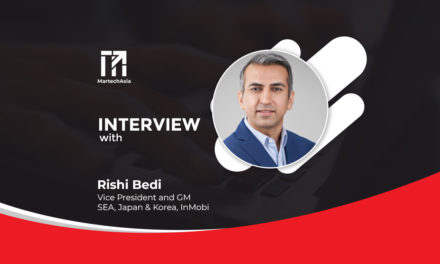The digital ad ecosystem is under siege from invalid traffic (IVT). Hyper-engaged users are a critical blind spot no one is talking about.
Online advertising is ever evolving, personalisation is now king. Marketers are increasingly pouring big budgets into tailored campaigns, but few realise their ad spend is quietly leaking away.
Unbeknownst to marketers, the digital ad ecosystem is under siege from invalid traffic (IVT). This traffic doesn’t provide any tangible value to marketers, instead it depletes budgets and damages campaign efforts, and it’s on the rise. IVT levels grew by 18% globally in Q1 2025 alone according to Pixalate, presenting a very real challenge to marketers.
IVT doesn’t just encompass malicious sources like AI powered bots however, as even legitimate loyal users are contributing to this problem without realising. Hyper-engaged users are rapidly escalating customer acquisition costs (CACs) by triggering paid campaigns with excessive clicks, draining budgets without delivering conversions.
Marketers aren’t taking into account these returning users when tackling ad fraud. If left unchecked, marketers face losing crucial advertising spend and decreased campaign effectiveness.
Silent hits to budgets
Pay-per-click (PPC) campaigns are a go-to tactic for marketers trying to boost traffic to their site. While incredibly effective, these campaigns are subject to increased IVT levels, preventing them from reaching their maximum potential. Invalid traffic is any traffic from a non-genuine source. This includes deliberately fraudulent sources such as bots operated by bad actors.
However, returning users are an overlooked source of invalid traffic unintentionally harming advertising efforts with excessive engagement.
At surface level returning users seem harmless to advertising efforts, but the reality is they are impacting PPC campaigns negatively in multiple ways.
- Depleting ad spend: Returning users are draining advertising budgets by ramping up CACs while not contributing to new conversions. PPC campaigns are run with set budgets, with each click on the ad draining a portion of the spend. Once the budget is used up, the ad is taken down. For convenience, returning users will utilise a paid campaign to navigate back to their favourite site repeatedly, quickly draining the budget. The ad will then be taken out of circulation before it has the chance to reach new users, leaving marketers paying out for clicks that haven’t resulted in any valuable growth for the company.
- Distorting campaign metrics: Frequent clicks from returning users significantly skew campaign metrics by artificially inflating traffic numbers. The data will suggest a campaign is performing well due to a high number of clicks, but in reality many of these clicks haven’t resulted in any real value as they are just users returning to the site. This data could then negatively impact future campaign or budgetary decisions as resources are diverted into similar ideas that will underperform because it appears the campaign was a success.
Managing loyal users
With so many resources invested into their campaigns, marketers can’t afford to let their ad spend be wasted on clicks offering zero incremental value.
Returning users aren’t the focus for fraud detection as they appear legitimate, allowing them to slip through undetected. So, the majority of anti-fraud systems let these users continue to engage with the campaign despite them offering no value, leaving marketers paying out repeatedly for already existing users.
However, there are tools and strategies marketers can deploy to more effectively manage these users and protect ad spend.
Marketers should monitor traffic at the user level to understand which users are offering genuine incremental value. By analysing behaviour patterns and activity, they can determine if returning users are distorting campaign data and spend with overactive engagement. They can then develop a strategy to address these users and protect ad spend without accidentally targeting genuine engagement.
To prevent frequent clicks driving up CACs, marketers can utilise custom verification rules. These rules set a hard cap on how many times a specific user can interact with a paid ad. After this limit is reached, they will no longer be able to see the campaign or click on it. This keeps CACs down while boosting the chances that new users will see the campaign before its budget is used up.
These rules also work to prevent click fraud from malevolent sources such as bots, as they are prevented from repeatedly spamming clicks to infiltrate campaigns and drain budgets.
Another step marketers can take to manage returning users is to introduce shadow campaigns. A shadow campaign is an exact copy of an existing campaign that is run alongside the original. Hyper-engaged returning users can then be redirected to this campaign to prevent them draining the budget of the original.
These campaigns are run at a reduced cost and allow loyal users to navigate back to their favourite site without depleting ad spend.
Ensuring results
Ensuring campaigns achieve their maximum potential is key for marketers, but with IVT rapidly depleting advertising budgets this goal is becoming harder to reach.
It’s crucial that marketers take action and manage IVT to prevent returning users from accidentally damaging campaigns.
Marketers can utilise the right strategies to protect their campaigns while still maintaining a healthy relationship with loyal users. Custom rules and shadow campaigns empower marketers to keep CACs down without neglecting their users. To guarantee they are making the most of every ad dollar, marketers need to overcome their IVT problem.


















